Keoladeo (pronounced ‘kev-la-dev’) National Park – the beating heart of Bharatpur – is known all over the world for, amongst many other things, its picturesque landscapes. However, sifting through the ocean of images on the internet as well as my own gallery, I find the reserve’s habitats to be quite under-represented in most forms of media. To be more specific, the images that do incorporate the park’s scenery still tend to be more wildlife-oriented with the landscape playing second-fiddle than the other way around.
So that’s exactly what I set out to address.
My goal over my last two trips to Keoladeo National Park was to really focus on basing my compositions around the landscape, with birds and other wildlife taking a bit of a back-seat in some ways. It was an interesting challenge, to say the least, and there certainly were many moments where I questioned the purpose of the whole project. Looking back, though, I’m quite happy with how things turned out thanks, in no small part, to a bunch of good fortune.
So let’s begin, shall we?
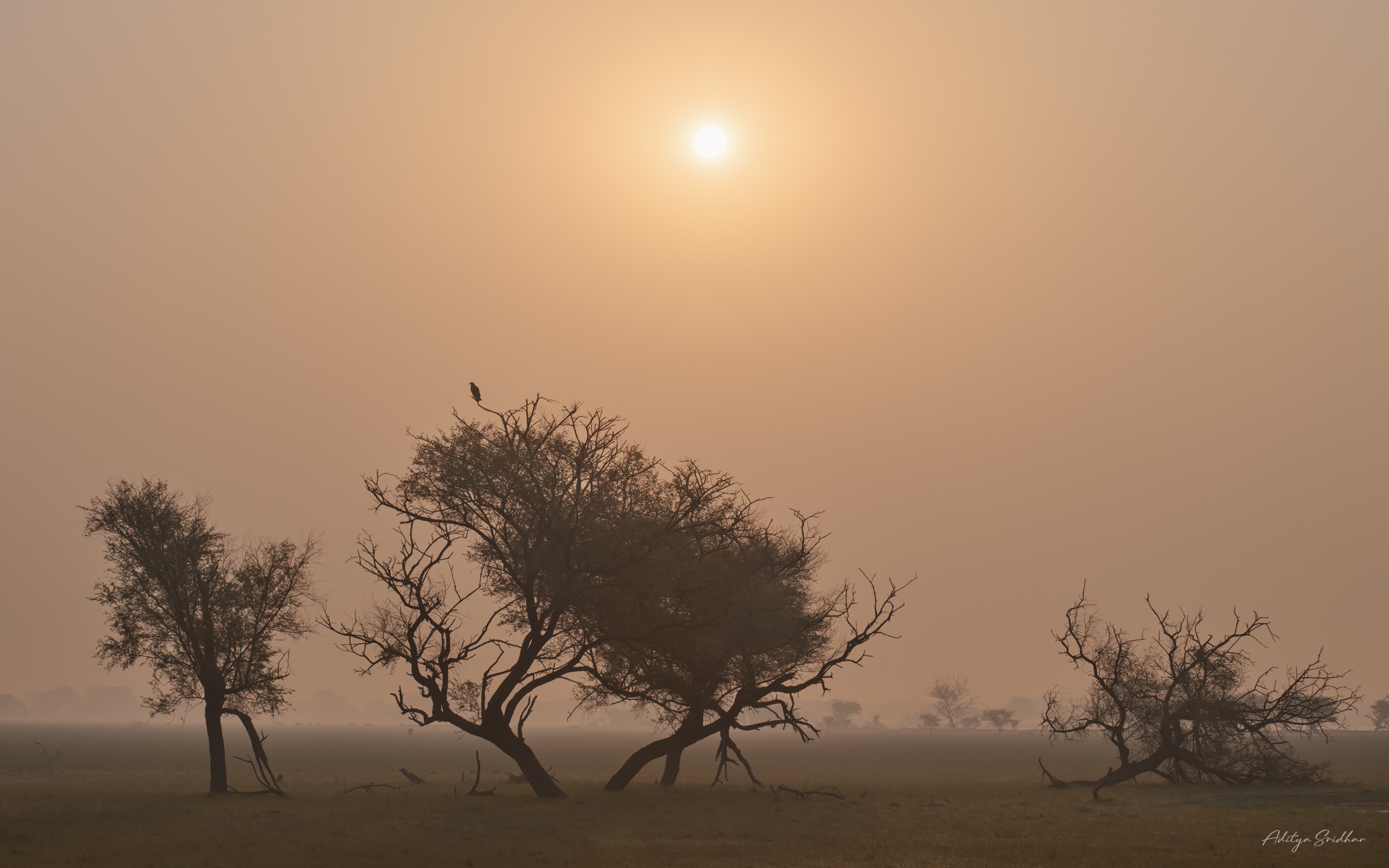
The Premise.
In my opinion, the accessibility and sheer diversity of Bharatpur’s habitats are what sets it apart from most other reserves around the country. As you travel along the main path, you can see the landscape transform from vast, dry scrublands to densely wooded swamps to expansive wetlands in the blink of an eye. It really is mind-boggling, at first, and I can say with confidence that the novelty doesn’t wear off even after multiple visits.
In terms of what I wanted to capture, well, that’s kind of where I hit my first roadblock.
You see, I didn’t really have a strategy heading into this project save for a burning desire to capture the park’s breath-taking scenery and, as you can probably imagine, that doesn’t really constitute a ‘plan‘, per se. It’s funny how, in hindsight, over-enthusiasm is and always has been the bane of my journey as a photographer; casting such a wide net was akin to shooting myself in the foot at the start of a marathon. I’d no idea where or how to start.
Either way, mistakes are an important part of success and this was the first one on a very long list…
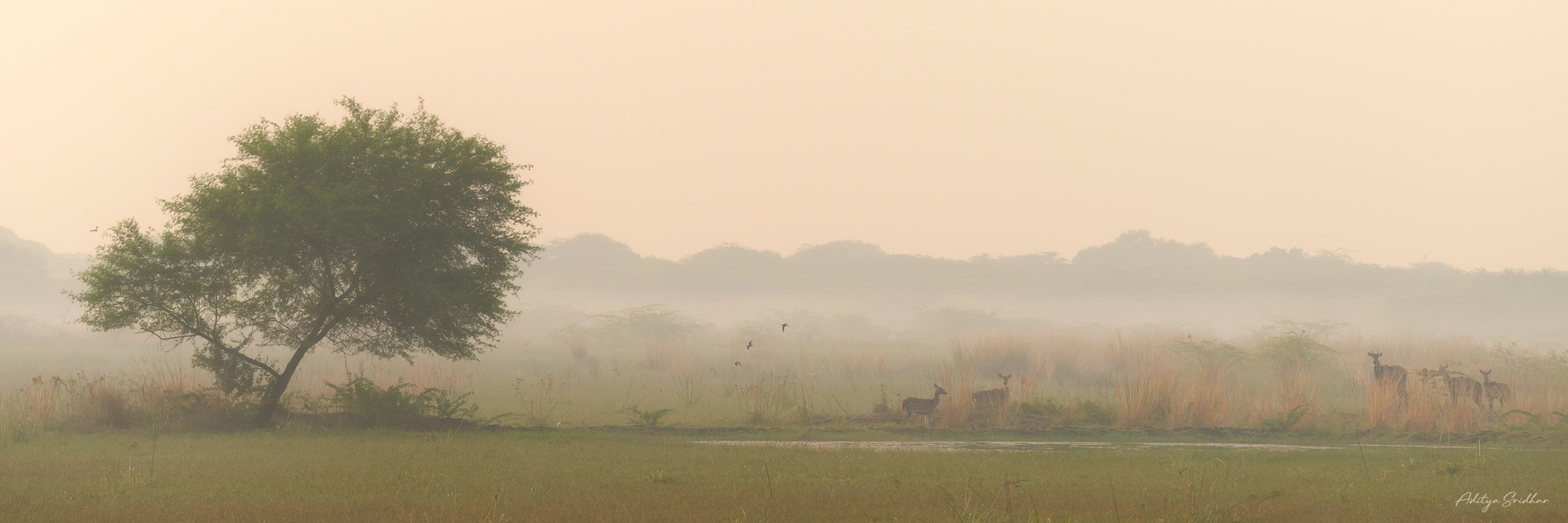
One of the ground rules (well, more like principles) I’d laid for myself and this blog post was to only share images that were shot at a focal length of 200mm or wider. It’s a rather arbitrary range, but I figured most photographers travel with just a wide-angle lens (typically in the 24-70mm range) and a mid-telephoto like the classic 70-200mm’s. I want to show that it’s certainly possible to travel all the way to Bharatpur with relatively inexpensive gear and still walk away with a bunch of images.
Oh, and if 200mm sounds a bit too ‘telephoto’, there’s a catch. The images that I’ve shot at the upper limits of what can be considered ‘wide’ are all stitched panoramas consisting of 2 or more frames. I found that to be a happy medium in terms of the look I wanted to capture, but more on this later.
The Woodlands.
The woodland forests of Bharatpur are, perhaps, the most under-rated parts of the park. It feels almost criminal to not stop and stare in wonderment as you pass through the high canopies surrounded by birds and fog; it really feels like something ripped right out of a fairy-tale.

Fog.
Probably the most important factor that influenced my decision-making on a daily basis. Frustrating and jaw-dropping in equal measures, learning to navigate, both physically and mentally, through this hurdle held the key to capturing the images I wanted. It was a tough challenge, but one I relished every second of.
The first time I walked through this stretch of dense woodland-forest, visibility was practically non-existent. According to the locals, the sun hadn’t risen for over two weeks – hyperbole, sure, but there was an element of truth to that statement. Sunrise, as we know it, certainly did not happen at the usual hours; the first sight I caught of the big, red fireball was at noon, when it was reduced to a rather flat, pale disk in the sky.
Lost in my thoughts, eyes darting around in search of potential compositions, I managed to sight the faintest bit of motion within a narrow clearing in the forest. Involuntarily, I stopped dead in my tracks; the wildlife photographers and biologists among you know why that’s often ill-advised. Most animals respond quite adversely to sudden movements, gestures, and sounds, and this is especially true in the case of shy and sensitive species such as Deer and Antelopes.
I’d thrown away my main advantage. The veil of fog works both ways, but the senses of a Spotted Deer operate on a much higher level than a human’s. Nevertheless, with the stag very much aware of my presence, I had to bide my time. Blending into the silhouette of a massive tree, I crept up close, slowly and with an overdose of caution. What I failed to account for, however, was the fact that the Deer and I didn’t exist in a bubble, even if it momentarily seemed that way. A nearby Lapwing betrayed my location and my all attempts at stealth were for nought.
I shot a couple of frames before the coldness of the air got to me. Lifting my dry eyes from the viewfinder, I caught a quick glimpse of the majestic stag, now right in front of me; a blink and it was gone.

The Marsh.
The second habitat type and, perhaps, the most photographed, is the open marsh. Brimming with life, this is probably where I struggled the most to capture pictures that worked well in terms of both story-telling as well as composition. It sounds a little counter-intuitive, but image-making gets exponentially more difficult as the number of birds in a scene increases. The chaos and sheer amount of variables (read: things that could, and will, go wrong) is something I find really tough to handle. I prefer compositions that really just focus on a single bird or two, but that wasn’t something I could ask for in this habitat.
Am I complaining? Not really. I just wanted to lay out the various factors that I needed to take into account. With that being said, I did manage to capture a couple of images I’m quite happy with.
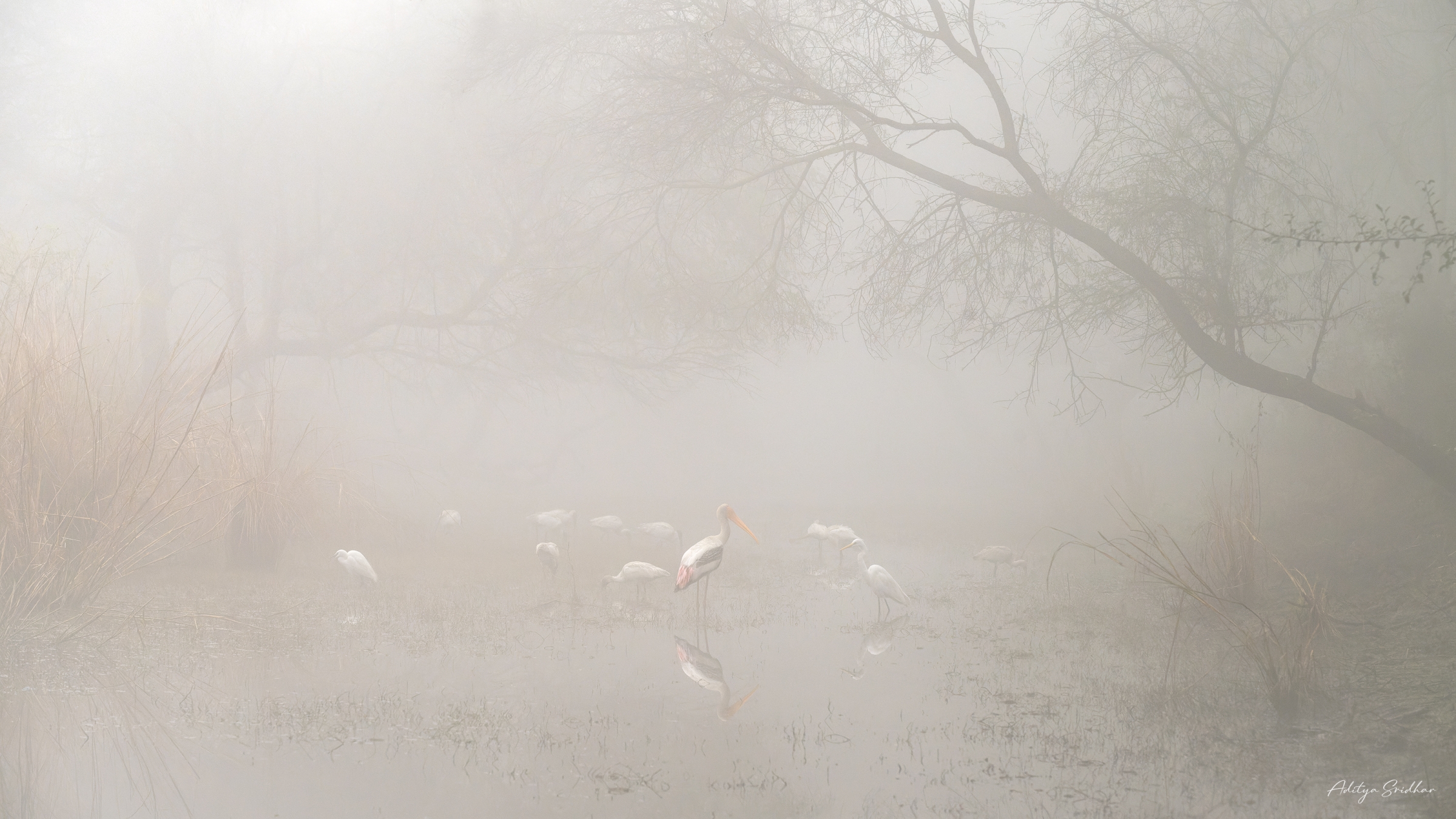
I found this mixed flock of waders – Painted Storks, Ibises, Egrets and Spoonbills – feeding in a canal somewhere in the depths of Bharatpur’s forests, far off the beaten path. What struck me immediately about this scene was the way the canopy faded into the dense fog. To capture as much of the surrounding landscape as I possibly could, I employed a technique I’ve been particularly obsessed with these days; this is a two-frame stitched panorama shot handheld. It’s an incredibly handy tool in situations where a wider focal length would end up being counter-productive by introducing distortion and eliminating background compression. Pretty neat, huh?
Walking a bit further ahead, I came across an island surrounded by reddish-brown aquatic plants- a classic characteristic of Bharatpur’s marshes during the winter – and stopped to take a closer look. I found a lone Glossy Ibis foraging in the tall reeds and decided to slowly approach it, but it flushed right as I framed my composition. While it never emerged from its hideout, a Black-headed Ibis came to the rescue, allowing me to capture a couple of frames as it flew past.

One of the great, again under-rated, features of winter in Bharatpur is the way the marshlands transform from their usual yellow-greens into a warm reddish-brown attire. It’s something I’ve always wanted to capture and I’m glad I was able to incorporate a bit of that into the image above. For reference, here’s how the plants look throughout the rest of the year.
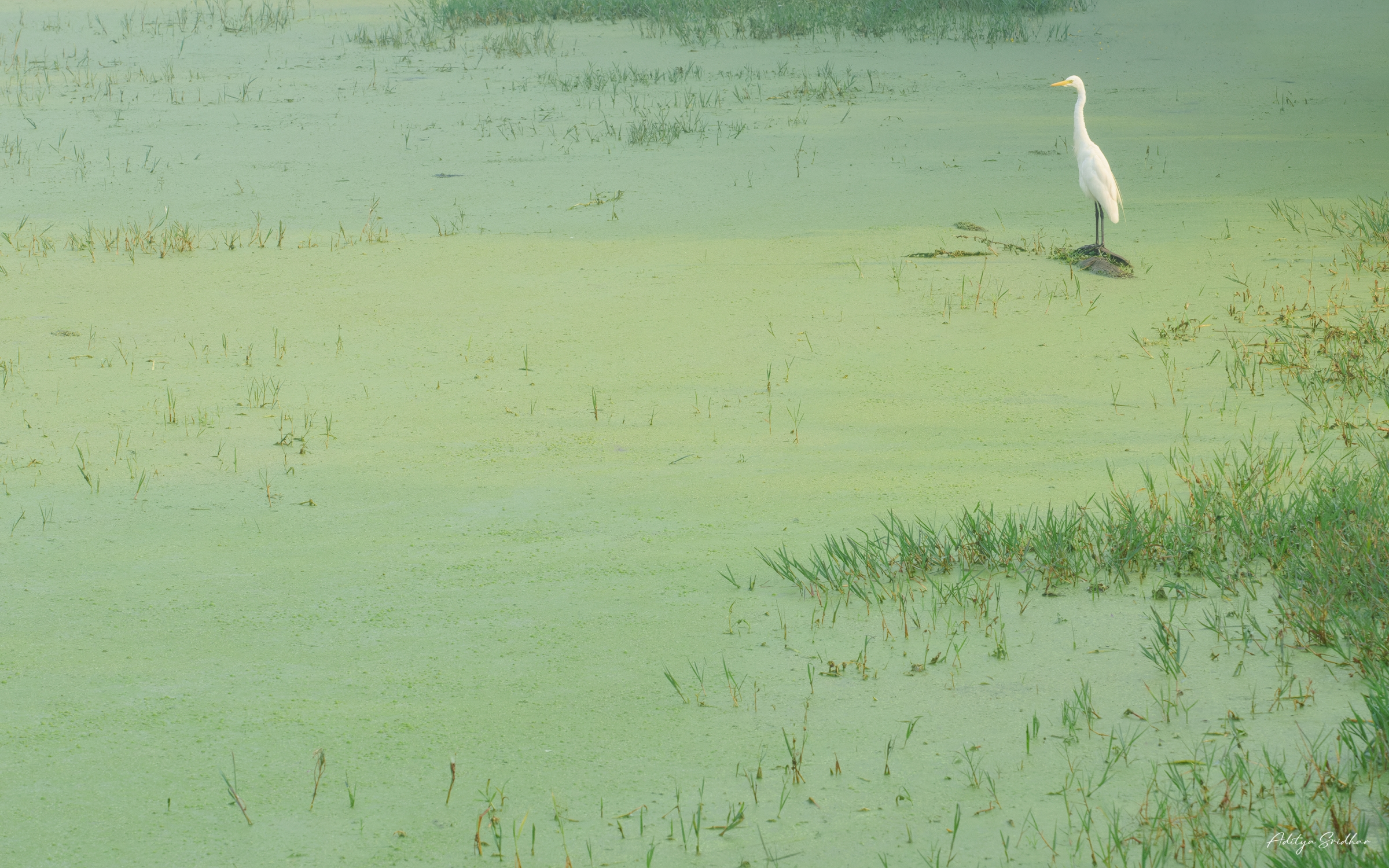
The Wetlands.
One of the least-photographed habitats is, without doubt, my personal favourite. The wetlands of Keoladeo National Park truly are a world of their own. You can look in pretty much any direction at any given point in time and find a composition worth photographing. However, as gorgeous as they are to the naked eye, they bear their own set of challenges that need to be tackled with patience and persistence.

Here’s an image from one of the most memorable mornings of my life. This wetland was blanketed in a rather dense layer of fog which gradually lifted as the sun rose, revealing dozens of these miniature islands teeming with life. I’m not sure I’ve ever experienced such an intense sense of peace and calmness, if that even makes sense. It was quite inexplicable, really.
A lot of times, scenes such as these look just so pleasing to the eye that our natural instinct is to simply point and shoot. There is a case to be made, though, for taking the time to look for those tiny imperfections that you can iron out by spending a little more time in the field refining individual aspects of the overall image.
While I was happy with my initial composition, I wanted just a touch more isolation between the Sambar deer and the overhanging branches. It took me a fair bit of time to find the perspective I was looking for, but by crawling down a wet, muddy slope by the roadside, I managed to get just enough clearance between my subjects and the surrounding landscape.

Here’s another shot that’s based around the same design philosophy of keeping things simple and balanced. I found the shapes of the trees on these islands quite complementary so I decided to stick around and see if I could make something of the scene. I’m really happy with the way it turned out. The Cormorant in the background was down to a bit of luck but, again, patience really pays off in this habitat, in particular. There’s always some sort of action to be had.

I’ve always been intrigued by the use of fog as a tool to simplify images, and this image is probably the most extreme version of that concept where the entire composition hinges on the tonal contrast between the three different layers – the trees, the fog, and the water.
I find shooting in such inclement conditions to be surprisingly similar to working in harsh, direct back-light, as weird as that may sound. There usually isn’t much colour or tonal contrast to work with in both cases, and I find myself looking for shapes and structures to really tie the whole image together.
Photography under these conditions has really driven home how little power I possess as a photographer when it comes to directing how I want things to pan out. To fine-tune some parts of a composition, you’re forced to relinquish control over other aspects of the scene, and while that may seem benign without additional context, it’s a nightmarish reality when you’re out in the field. Fog lays bare any flaws in an image, be it due to not having enough clearance between a distant shoreline and a bird’s head, a rogue branch, or a clipped wing. When things do align, however, there’s simply nothing like it.

Everything In Between.
Now, of course, I couldn’t just end this post without spending a bit of time discussing and showing some of the more environmentally-ambiguous compositions I captured. A lot of times, the purpose of shooting at wider focal lengths is to show the subject’s habitat, but we don’t always have to stick to that rule, do we? We don’t always hold all the cards in photography, but what matters is how we choose to play with what we do have.

This Crested Serpent Eagle was a regular visitor to one of the 3 watch towers located within the park. The conditions were, as you can tell, incredibly foggy – so much so that I couldn’t really see much further beyond my stride – but that worked to my advantage. I was able to slowly creep up on this beautiful raptor and capture a few images that showed just how poor the visibility was at the time.

I found this colony of very active Flying Foxes near the entrance to the famous Keoladeo Temple and figured I just had to photograph them. They, too, are quite approachable and don’t seem to be bothered by human presence. It was quite a surreal experience to be surrounded by these massive bats as they screeched, flew around, and fought over territories and food.
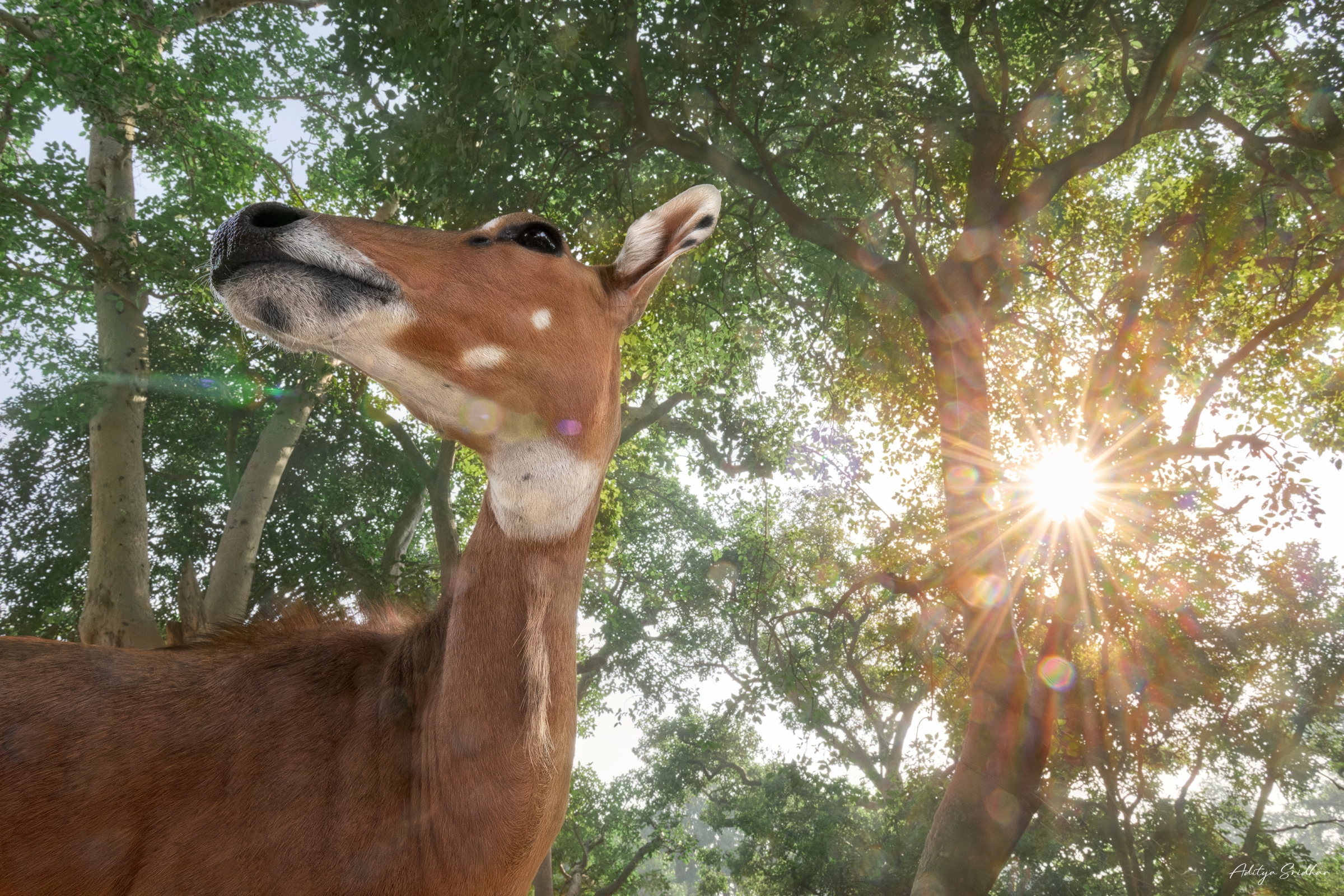
Meet Shamu, the friendliest, gentlest Nilgai you could possibly imagine.
There’s just something so special about getting up-close with these beautiful, incredibly powerful antelopes. While Nilgai are quite stoic, Shamu’s a bit of an exception. She’s very approachable and doesn’t mind being around humans. In fact, she got a little too comfortable around me at times (She urinated and I was in the splash zone. Not cool.)
Anyways, this is a side to this species that I really wanted to capture. A lot of things needed to fall in place for my idea to work, and I was so thrilled to see everything come together on this bright, sunny morning.
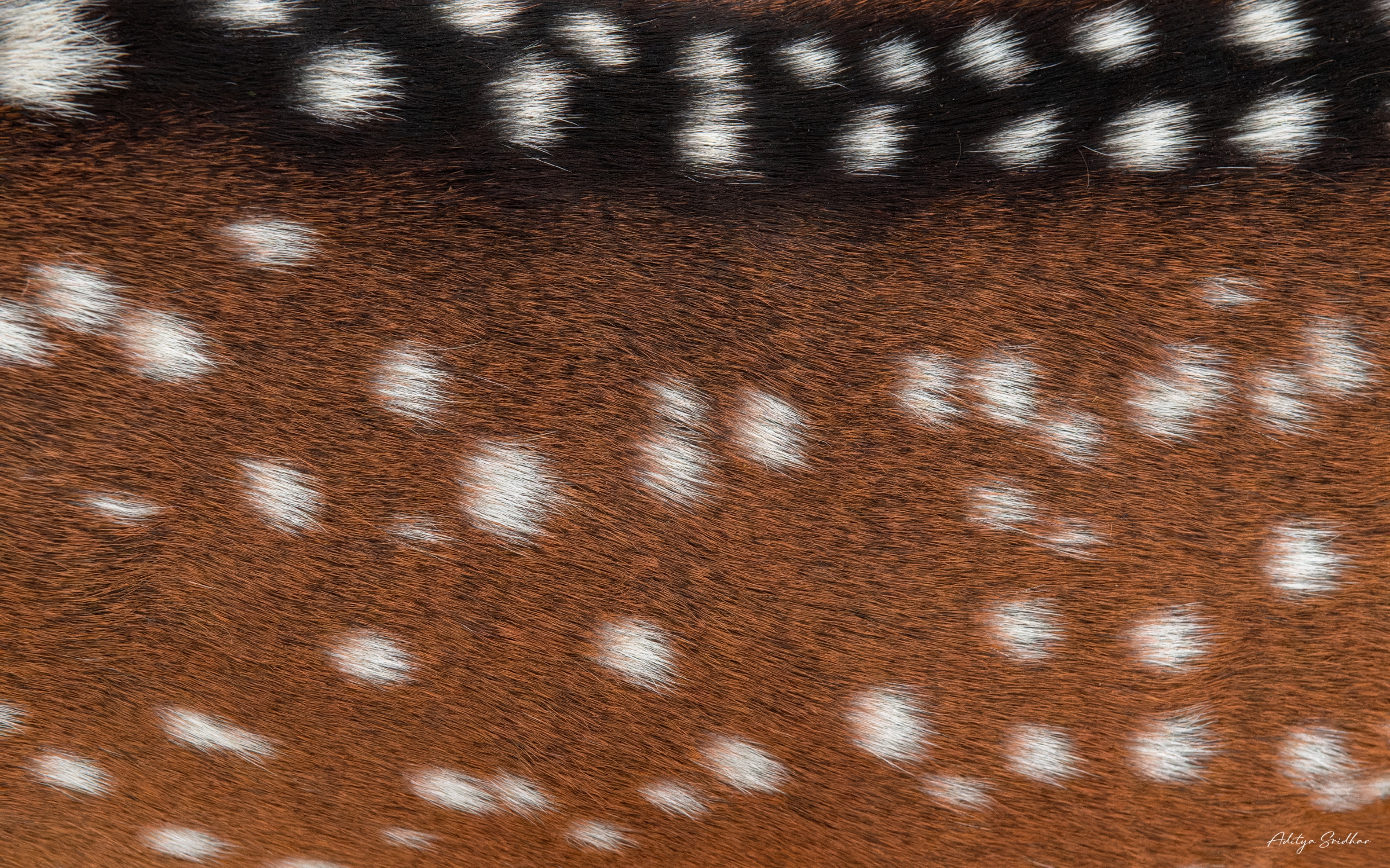
I’d had the outline for this concept in the back of my mind for the longest time, but much like the image of Shamu, to actually be able to execute it and have all the elements come together required a bit of patience and a lot of luck.
If you’re familiar with Spotted Deer, you might have a feel for how shy and skittish they typically are. There’s one place, though, where you can usually approach these antelopes fairly easily – a temple within Keoladeo National Park, which also operates as a wildlife rehabilitation centre. The animals there, while still totally free and wild, are quite habituated to human presence. Visitors can approach them (with some care and patience, of course) to fairly close distances – perfect for the kind of image I was going for.
My initial plan was to place the camera parallel to the Deer’s body in order to get the most depth-of-field possible. That, however, meant I’d have to forego capturing the beautiful black streak that ran down the stag’s back, and it was a compromise I wasn’t very comfortable taking. The clock was ticking, and while I went back-and-forth on my decision, the sun started to dip below the horizon. This was a potentially game-ending deal; without light, I wouldn’t be able to stop down my aperture as much as I’d want to for a shot that needs every inch of depth-of-field available, which, in turn, would lead to exorbitant noise levels and potential camera shake.
What I did manage to capture, in the end, is down to a lot of good fortune. I found a bench that gave me just the right elevation to show off the black ‘runway’ as well as the bright white markings on the fur. It’s an image that took me way outside my comfort zone at the time and I’m still unsure of what I feel about it, in all honesty. I’m really glad I attempted this shot, though, and I had a lot of fun doing so which, I suppose, is the most important part.
Final Thoughts.

Over the years, I’ve found that the creative process is as much about destruction as it is about building upon ideas and concepts. It’s about disrupting the status quo and tearing down preconceived notions about how things should be. In that sense, creation and destruction, I’d argue, are two sides of the same coin.
However, creation always comes at a cost and in my own work, I find myself constantly plagued by self-doubt and insecurity that manifest themselves in different forms. To try and process, comprehend, and attempt to answer the myriad self-destructive questions that pop up can, at times, feel like trying to carve a path through a psychological minefield, if you could imagine it that way.
In the depths of those moments, however, lie opportunities for introspection, reflection, and, ultimately, growth.
That, to me, is what this project was all about. To showcase a side to Bharatpur – ‘The Kingdom of Birds’ as a signpost on the city’s outskirts reads proudly – that I wish other people captured more often was my objective. To that end, I hope I’ve done the park justice.
Thanks as always for taking the time to read and view the images in this blogpost!

